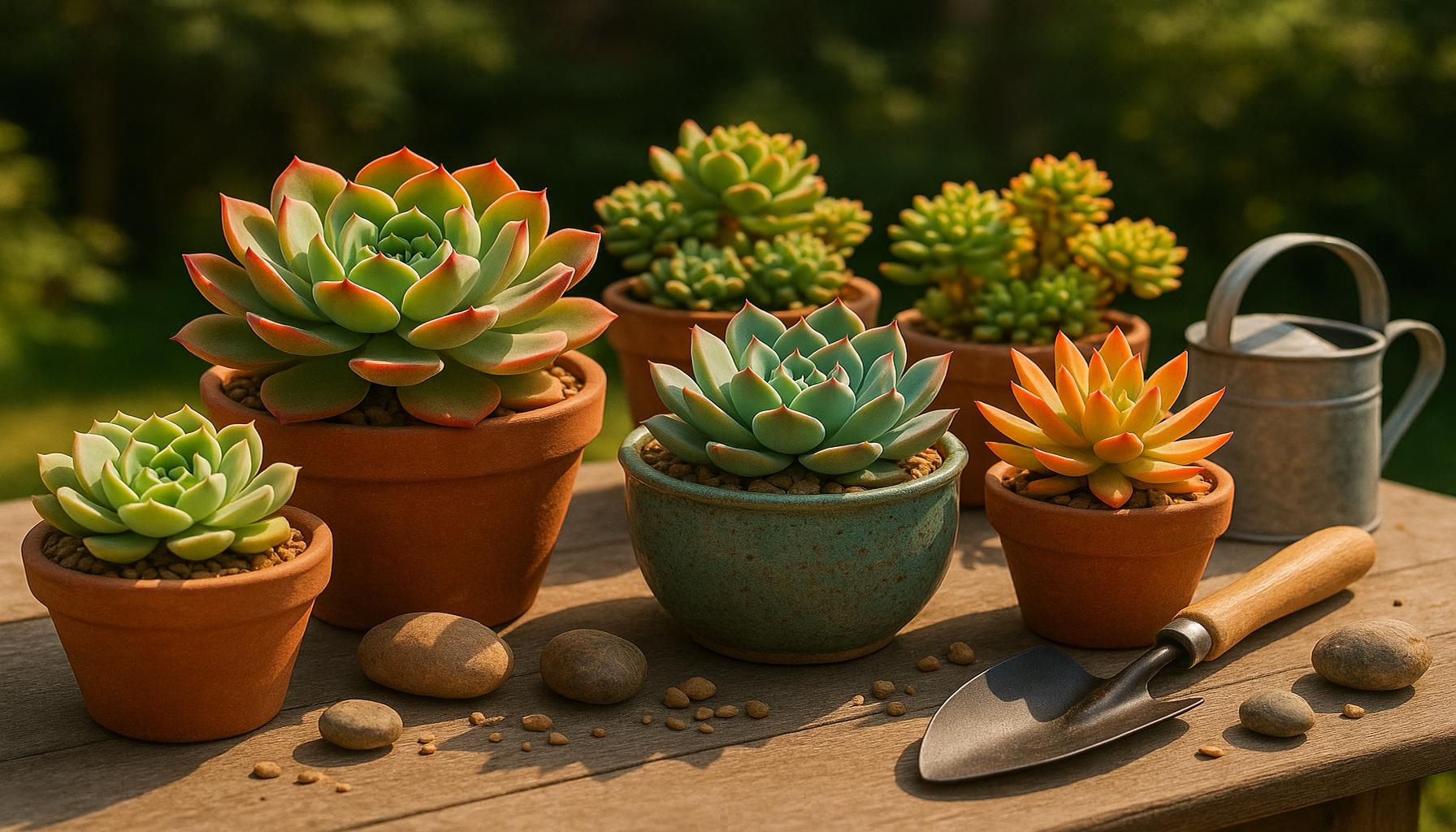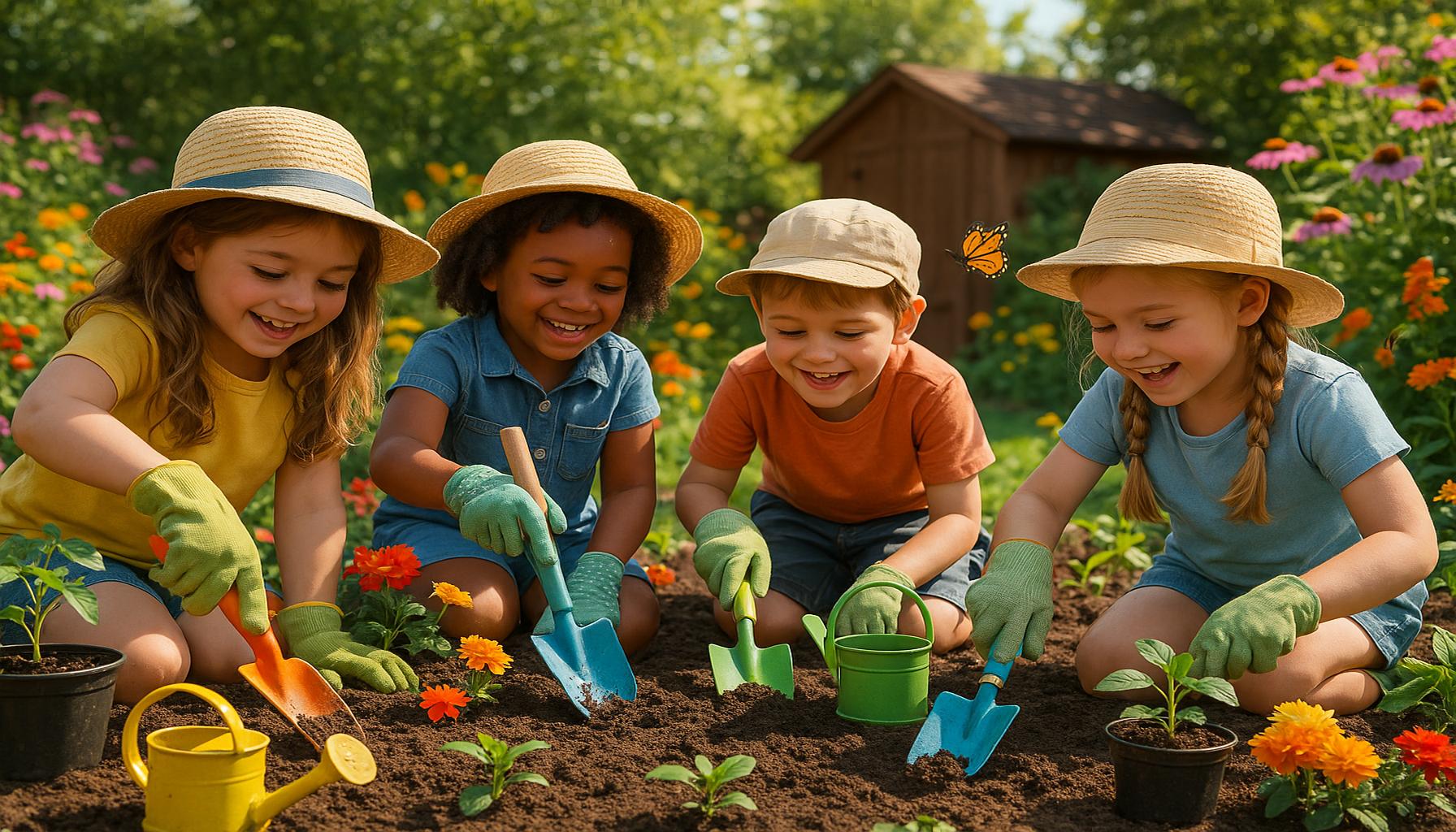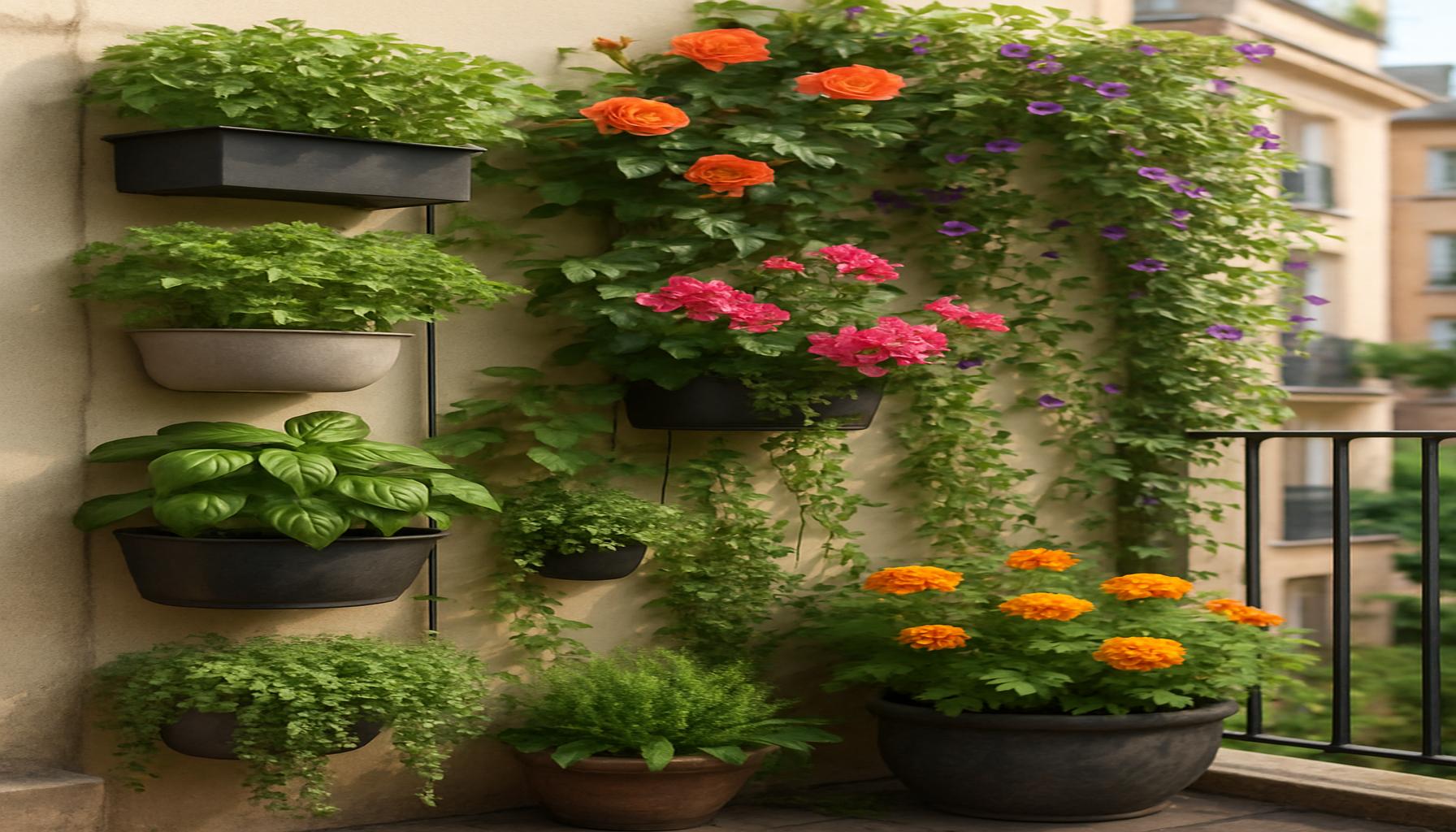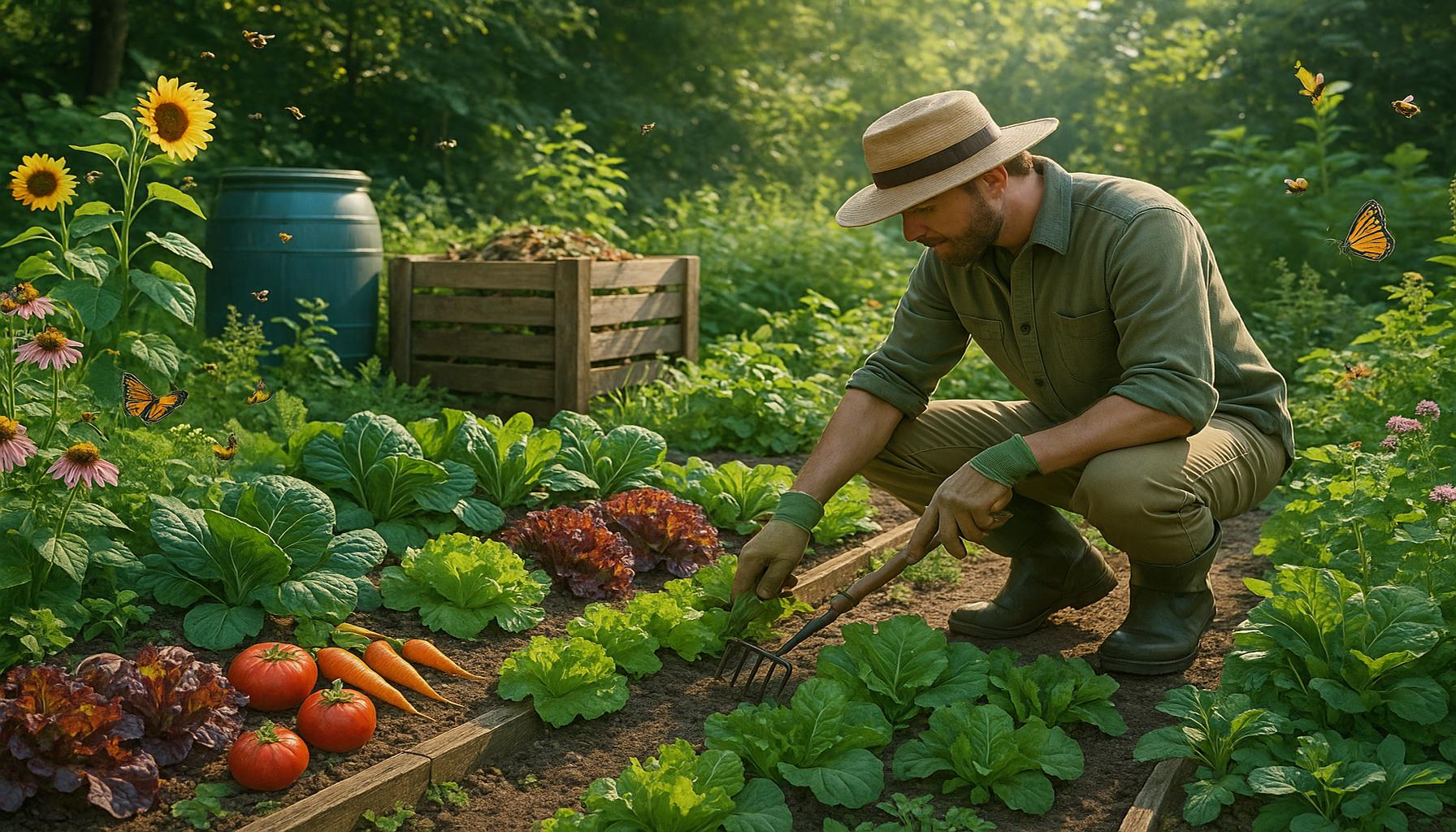Succulent Gardening: Tips for Growing Low-Maintenance Plants

Unlocking the Secrets of Succulent Gardening
Imagine a garden that thrives with minimal effort, boasting vibrant colors and unusual shapes. Succulent gardening offers just that—a low-maintenance solution for both novice and experienced gardeners in the United States. With their unique ability to store water, these remarkable plants require less watering and care compared to traditional flora. This paints a perfect picture for those with busy lives or limited gardening experience, enabling them to enjoy the beauty of nature without the extensive commitment.
Why Choose Succulents?
Succulents are not only stunning but also perfect for busy lifestyles. Here are a few reasons to embrace these resilient plants:
- Diverse varieties: The world of succulents is thrillingly diverse, with options such as the rosette-shaped Echeveria, the striking Haworthia with its thick, dark leaves, or the popular jade plant, Crassula ovata. Each succulent offers unique colors, patterns, and textures, allowing gardeners to create personalized displays that reflect their tastes.
- Low water needs: Succulents are champions of drought tolerance. Their thick, fleshy leaves are designed to store water, making them ideal for areas experiencing water shortages. For instance, in states like California and Nevada, gardening with succulents can mitigate some of the challenges posed by drought, showcasing a beautiful landscape while conserving precious resources.
- Easy propagation: Among the many joys of succulent gardening is their ability to reproduce with remarkable ease. Stem cuttings or leaf propagation can lead to new plants that are nearly identical to their parent. Techniques such as allowing the cut end to dry out before planting or placing leaves on soil can yield fantastic results, making it an exhilarating process for gardeners looking to expand their collection without significant costs.
Whether you’re looking to create a captivating indoor garden or a stunning outdoor landscape, growing succulents can provide the perfect touch. Use shallow containers or terrariums for indoor settings, filled with a well-draining potting mix, and position them in bright, indirect sunlight. Outdoors, consider succulent arrangements in rock gardens or along pathways where their unique textures can shine amid the greenery.
This guide aims to equip you with essential tips and insights to cultivate these magnificent plants successfully. As you embark on your succulent gardening journey, you’ll discover that these hardy plants indeed can transform your space into a lush, low-maintenance oasis. Explore the possibilities, and get ready to be amazed by the resilience and beauty of succulents that can bring color and life to your surroundings, all while requiring little upkeep.
DIVE DEEPER: Click here to uncover the beauty of traditional skills
Choosing the Right Succulents for Your Space
When it comes to succulent gardening, selecting the right species is crucial to your success, especially if you’re new to this rewarding hobby. With thousands of succulent varieties available, it’s easy to feel overwhelmed. However, understanding the specific needs and characteristics of different types will help in creating a thriving garden that aligns with your skill level and aesthetic preference.
Popular Succulent Varieties to Consider
Here are some popular types of succulents that are not only beautiful but also relatively easy to care for:
- Jade Plant (Crassula ovata): Known for its thick, glossy leaves and characteristic tree-like appearance, the jade plant is a favorite among houseplant enthusiasts. This succulent thrives in bright light but can tolerate some shade, making it versatile for indoor spaces.
- Hens and Chicks (Sempervivum): A classic choice for outdoor gardens, hens and chicks form charming rosettes. They are exceptionally hardy and can survive in poor soil and full sun, making them perfect for rock gardens or succulent arrangements.
- Burro’s Tail (Sedum morganianum): This trailing succulent boasts cascading stems adorned with plump, blue-green leaves. It’s ideal for hanging baskets or shelves where its unique shape can truly stand out.
- Aloe Vera (Aloe barbadensis miller): Besides its ornamental qualities, aloe vera is renowned for its soothing properties and is a staple in many households. It prefers bright light and minimal watering, making it an excellent choice for beginners.
When selecting succulents, consider your environmental conditions such as indoor lighting or outdoor weather patterns. Most succulents thrive in well-draining soil and bright, indirect sunlight. For individuals living in regions with high humidity, options like Haworthia or Echeveria can thrive with slightly more moisture, while other varieties prefer dryer conditions.
Container Selection for Your Succulents
Choosing the appropriate container is just as vital as selecting the right plants. Succulents require pots with drainage holes to prevent overwatering, which can lead to root rot. Terracotta pots are an excellent choice, as they allow for proper airflow and absorb excess moisture. Alternatively, consider decorative ceramic or plastic pots equipped with drainage systems for a personalized touch to your garden.
For those looking to create stunning combinations, mixing different varieties of succulents with varying heights, colors, and textures can lead to visually appealing arrangements. Remember to give the plants adequate space for growth, ensuring they can flourish without overcrowding.
As you delve deeper into the art of succulent gardening, embracing these foundational elements will set you on a path toward creating a vibrant, low-maintenance garden that you can enjoy year-round. With the right plants and containers, you are well on your way to mastering this delightful gardening alternative.
Exploring the Benefits of Succulent Gardening
Succulents have garnered considerable attention in recent years, predominantly due to their incredible ability to thrive with minimal care. These low-maintenance plants not only beautify your indoor and outdoor spaces but also offer various advantages for gardeners of all levels. Below is a comprehensive table that highlights key advantages of incorporating succulents into your gardening routine.
| Advantage | Description |
|---|---|
| Water Efficiency | Succulents store water in their leaves, making them ideal for arid conditions and requiring less frequent watering. |
| Space Savers | These plants have a compact nature, allowing them to fit into small spaces, making them suitable for urban gardening or indoor environments. |
Gardening enthusiasts will find that succulents can be easily propagated from leaves or cuttings, providing further opportunities for growth without incurring extra costs. Each of these remarkable plants brings unique shapes, colors, and textures, enhancing the aesthetic of any setting. Beginners and experienced gardeners alike can enjoy the rewards of this fun and accessible horticultural venture, making it a perfect choice for anyone interested in bringing life to their surroundings.
With their distinctive beauty and multifunctional perks, succulents truly stand out as a remarkable centerpiece in any gardening collection.
DIVE DEEPER: Click here to learn about the revival of calligraphy
Creating the Perfect Growing Environment
Once you’ve selected the right succulents and containers, the next step in your succulent gardening journey is to cultivate an ideal growing environment. This encompasses lighting, watering practices, soil composition, and temperature, all of which play a crucial role in the health and vitality of your plants.
Understanding Light Requirements
Most succulents flourish in bright, indirect sunlight, with a general recommendation of at least six hours of light per day. For indoor gardens, placing your succulents near east or south-facing windows is often ideal. If your indoor setting lacks sufficient light, consider using grow lights, which can mimic sunlight and promote healthy growth. Pay attention to the characteristics of individual species, as some may require slightly less or more light. For instance, Haworthia thrives in lower light conditions, making it a perfect choice for dimmer areas of your home.
Watering Wisely
Watering is one of the most critical aspects of maintaining healthy succulents. Overwatering is a common mistake made by beginners, often resulting in root rot. As a general rule, it’s best to water succulents deeply but infrequently, allowing the soil to dry out completely between watering sessions. During the growing season, typically spring and summer, succulents can be watered more frequently, while in the dormant season (fall and winter), you may only need to water them once a month. A helpful indicator is to check the soil with your finger; if it feels dry an inch below the surface, it’s time to water.
Selecting the Right Soil Mix
The composition of your soil dramatically affects the well-being of your succulents. Standard potting soil can retain too much moisture for these drought-resistant plants. Instead, opt for a well-draining soil mix specifically designed for succulents and cacti. Many gardeners create their own blend using a combination of potting soil, coarse sand, and perlite or pumice, ensuring adequate drainage and aeration around the roots. This combination allows for moisture retention without suffocating the plant.
Monitoring Temperature and Humidity
Succulents are inherently adaptable but ideally prefer warm temperatures, often thriving in environments between 60°F to 80°F. They can tolerate cooler temperatures but should be protected from harsh frost. In areas with high humidity, it’s vital to improve airflow around the plants, as excessive moisture can lead to fungal infections. Consider using a fan or ensuring that indoor succulents are spaced apart to promote sufficient airflow.
Pest Management Strategies
Another consideration in succulent gardening is pest management. While succulents are less prone to pests than many other plants, they can still fall victim to mealybugs and aphids. Regularly inspecting your plants and maintaining proper care can help prevent infestations. If pests are detected, a gentle blast of water can often dislodge them, or you can use insecticidal soap as an organic solution. Keeping the leaves clean and free from dust also contributes to the overall health of your succulents.
With the right environment, care techniques, and a bit of attention, your succulent garden can flourish beautifully. Embracing these practices will not only help you nurture your plants but also deepen your appreciation for the simplicity and elegance these remarkable species bring into your life.
DISCOVER MORE: Click here for helpful gardening tips
Conclusion
In summary, successful succulent gardening hinges on understanding the unique requirements of these low-maintenance plants. From selecting the right varieties to creating an appropriate environment, each step contributes to a thriving garden that adds stunning visuals to your space. Remember, aspect such as optimal lighting, proper watering techniques, and using a well-draining soil mix cannot be overlooked. Frequently, new gardeners find themselves overwhelmed by the sheer variety of succulent species and care techniques available. However, with patience and gradual experimentation, the learning curve can be both enjoyable and rewarding.
Moreover, maintaining a watchful eye on temperature, humidity, and potential pests will fortify your efforts. It’s essential to take these preventative measures, enhancing the longevity and health of your plants. For those who value sustainability and aesthetics in their living spaces, succulents serve as an ideal choice, requiring minimal upkeep while still offering a vibrant array of colors and textures.
As you dive deeper into the fascinating world of succulent gardening, consider joining local gardening clubs or online forums to connect with like-minded enthusiasts. Sharing experiences, tips, and successes can enhance your gardening journey, paving the way for a flourishing, beautiful indoor or outdoor oasis. Now is the perfect time to let these resilient plants bring a touch of nature’s elegance into your life.


